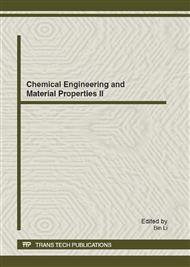p.535
p.539
p.543
p.548
p.553
p.558
p.563
p.567
p.572
Antistatic Poly(Ethylene Terephthalate)/Polyaniline-Coating Multiwalled Carbon Nanotubes Nanocomposites
Abstract:
A convenient method had been developed for preparing antistatic Poly(ethylene terephthalate)/multiwalled carbon nanotubes (PET/MWCNTs) nanocomposites. Polyaniline (PANI) was employed to coat MWCNTs as interfacial modifier. At first, the PANI-coating MWCNTs (PANI-c-MWCNTs) were prepared via miniemulsion polymerization of aniline at the presence of MWCNTs. The TEM images, FT-IR spectra, UV-Vis spectra and electrical conductivity were investigated, which indicated that the MWCNTs were coated with a conductive PANI ultrathin film while the morphology and electrical property had almost no damage. Then the PANI-c-MWCNTs were added into PET through in-situ polymerization method. The TEM images indicate that PANI-c-MWCNTs could be well dispersed in PET matrix, which had important positive effects on the electrical conductive properties of PET/PANI-c-MWCNTs nanocomposites. The results indicate that the electrical conductivity of PET/1.0 wt% PANI-c-MWCNTs nanocomposites reaches the antistatic level.
Info:
Periodical:
Pages:
553-557
Citation:
Online since:
July 2012
Authors:
Price:
Сopyright:
© 2012 Trans Tech Publications Ltd. All Rights Reserved
Share:
Citation:


